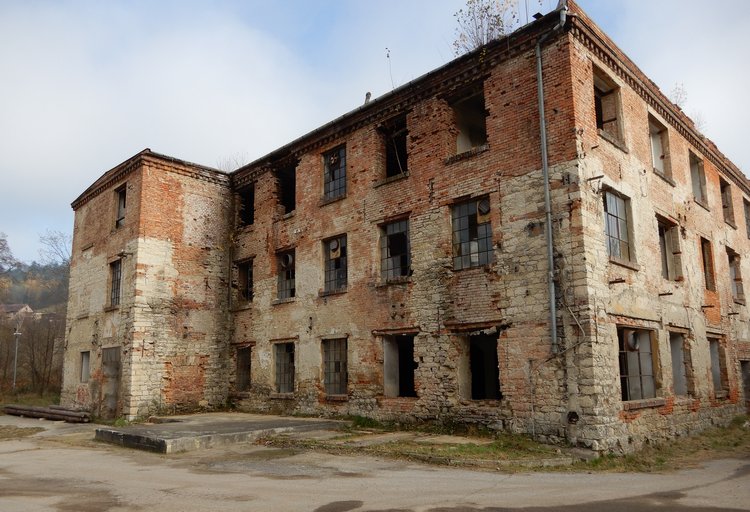A museum of Holocaust survivors will open in one of the buildings of the former factory of Oskar Schindler in Brnenec on 10 May, on the occasion of the 80th anniversary of the end of World War Two, Milan Sudoma, manager of the Schindler’s Ark project, told CTK.
For now it will be a one-off programme, then the museum will be open to the public on an irregular basis. “It will be a trial run, we will open irregularly, mainly for schools. We are still in a hurry, there is still a lot of work to do. The exposition will be in the old factory hall, which we have adapted for it,” said Sudoma.
The factory in Brnenec in the Pardubice region was founded as a paper mill, then became an important textile factory. During WW2 it was converted into a munitions factory and Brnenec became a branch camp of the Groß-Rosen concentration camp. The German businessman Oskar Schindler moved about 1,200 workers from his enamelling plant in Poland to the factory, saving their lives. However, Schindler remains a controversial figure, not just a hero and saviour of Jews, as he was also a member of the Nazi Party and German military intelligence.
The factory hall is one of several buildings on the complex. It will house the permanent exhibition ‘Starting from Zero’, which was on display last year in Brno’s Villa Tugendhat. The exhibition presents works by female designers of the Bauhaus art school. The second exhibition will show life in a concentration camp and will focus on people who survived the Holocaust.
“Thomas Keneally, the author of the famous book Schindler’s Ark, will attend the opening of the museum. Oskar Schindler will be one of the main characters in the exhibition, and we are conceiving of him in such a way that there will be materials from different points of view, so that people can make up their own minds about him,” Sudoma said.
In September 2023, the Arks Foundation announced an international competition to design the transformation of the former factory site. The vision of the Schindler’s Ark competition is to create a worthy memorial to the survivors and to preserve the legacy of the Oskar Schindler camp by describing and continuing the history of the Low-Beer family and textile production in the region.
The cost of putting the exhibition into operation is around 1.5 million euros. Most of the money is from private donors.
According to Sudoma, the foundation still has a lot of work to do. “All the buildings that are heritage listed still need to be repaired,” he said. “One belongs to the municipality, they have applied for a grant to repair it so that there can be an information centre there, it will be at the entrance to the complex. Last year, with the help of the Pardubice Region, we finished repairing the roof of one building. We repaired the gate of the concentration camp where the prisoners used to go. The largest factory hall is waiting for its repair.”
Brnenec Mayor Blahoslav Kaspar said efforts to save the factory have been ongoing for about 17 years. “First the municipality was involved, then the foundation came in. It is very good that we are commemorating the horrors of the war and what led to the creation of such places as concentration camps,” he told CTK.








